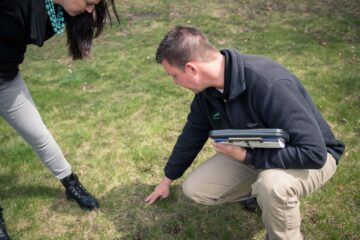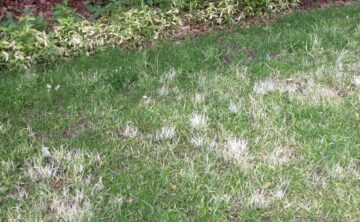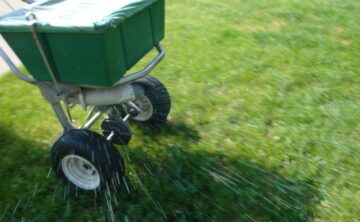Spring Lawn Care Checklist for Minnesota Yards
At the first sign of spring in the Minneapolis & St. Paul area, many of us are ready to pounce on our yard and get the growing season started. However, patience and planning will pay dividends when it comes to your lawn. Newly emerging grass shoots are tender and easily damaged. Likewise, soggy soil that leaves an indent when stepped on should be left to dry to avoid being compacted. Our lawn care experts created a foolproof do-it-yourself spring lawn care checklist, specifically for Minnesota growing conditions, to help you create a lush, green lawn this year.
Spring lawn care tips

Across Minnesota, cool-season turfgrass species are the most commonly planted. These lawns have a growing cycle that is well-suited for our northern climate. They thrive in the spring and fall when temperatures are warm, but still mild enough not to cause heat or drought stress. During the hottest mid-summer months, growth slows, and these grasses become dormant, which helps them withstand heat and drought. Creating a lawn care plan that is in sync with your turf’s natural growth cycle will give you the best results.
Wondering when to overseed, fertilize, or aerate your grass in Minnesota?
Early spring lawn checklist (March - Early April)
- Clean and service lawn care equipment, including sharpening your mower blade.
- Clear the debris from your yard and landscape.
- Lightly rake matted areas using a springy leaf rake.
- Focus on lifting the turf.
- Don’t try to rake out all of the brown grass or thatch–wait until late summer or fall.
- Avoid raking too aggressively, which can tear out newly emerging grass and create bare spots that invite weeds.
- Survey your yard
- Do you have salt damage? If so, gently water areas near roads to wash the salt away.
- Are there signs of rodent damage or tunneling? If so, you can repair minor damage by flattening the areas, filling them with topsoil if needed, and overseeding.
- Are there bare patches, such as under trees or other shady areas? Consider overseeding now to take advantage of extra sunlight before your trees leaf out.
- Are there signs of snow molds or other lawn diseases? If there are signs of snow mold, simply rake the area to allow the grass to dry thoroughly.
- Do you have washouts or standing water?
- Minor washouts can also be addressed with overseeding. Major drainage issues may need professional attention to keep the problem from repeating. Our lawn care restoration experts can address extensive damage, which may require re-grading the soil or reseeding to recover.
- Are there signs of snow molds or other lawn diseases? If there are signs of snow mold, simply rake the area to allow the grass to dry thoroughly.
EXPERT TIP: Skip the yard waste bags. Gather compostables like twigs or leaves and follow the University of Minnesota’s advice for composting.
Late spring lawn checklist (Mid April - May)
- Begin mowing near the end of April. Read more about proper mowing from our lawn experts!
- Apply crabgrass pre-emergent in late spring or early summer as it first begins to appear.
- Consider performing additional lawn care services before the heat of summer builds:
- Fertilize your lawn, ensuring all package safety instructions are followed.
- Aerate your lawn to reduce soil compaction.
- Overseed your lawn to fill in bare spots with an appropriate seed blend for your property. For great results, this can be done in conjunction with aeration. Be sure to wait the proper amount of time following pre-emergent application.
- Ensure your lawn is receiving adequate water throughout the growing season.
- Inspect your irrigation system for signs of leaks or damaged sprinkler heads.
Have lawn concerns beyond what you can manage on your own?
Contact us to schedule a consultation with a lawn care expert to develop a program customized to the conditions in your yard!
Other items you may be interested in:

Common Lawn Issues in Minnesota
When you work so hard to maintain your lawn, you might dream of having it look perfect. In reality, even a well-maintained lawn in the

Minnesota Homeowner’s Guide to Lawn Fertilization
Fertilizing your lawn may seem like a straightforward concept, but deciding on a proper schedule of when and how much to apply can get tricky



